35 Accidental Inventions That Dramatically Changed the World

Every day, we use products such as microwaves and matchboxes to make our lives easier. But believe it or not, these ingenious inventions and others that allow us to live out our lives hassle-free were not the product of trial and error but were created entirely by accident. Yes, you have serendipity to thank for a staggering amount of useful items in your life, ranging from delicious potato chips to the literally life-saving drug, penicillin. Herein, we’ve gathered some of the most life-changing products that were accidental inventions.
RELATED: 13 Bizarre Facts About Friday the 13th You Never Knew.
35 Inventions That Were Created Accidentally
1. The Microwave Oven
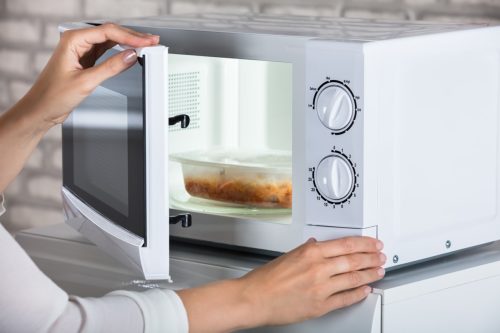
Percy LeBaron Spencer was working on magnetrons—high-powered vacuum tubes that generate short radio waves called microwaves—when he accidentally discovered microwave cooking. The engineer was doing his job as usual when he noticed that the candy bar in his pocket had melted. Quickly Spencer realized that it was the magnetrons that were causing this phenomenon. By 1945, he had filed a patent for his metal cooking box powered by microwaves.
2. Post-It Notes

As the Post-it website tells it, 3M scientist Dr. Spencer Silver was doing research on strong adhesives when he came across quite the opposite: one that “stuck lightly to surfaces but didn’t bond tightly to them.” Silver initially had no idea what to do with his discovery, but years later another 3M scientist, Art Fry, came to him with the idea to create a bookmark that could stick to paper without damaging it. Eventually, that bookmark became the Post-it note.
3. The First Artificial Sweetener

Saccharin, the first artificial sweetener, was discovered in 1878 by Constantin Fahlberg. The Russian chemist was working in the lab of chemistry professor Ira Remsen when he accidentally tasted some of the chemicals he was working with and realized how sweet they were. After some experimentation, Fahlberg concluded that the sugariness was caused by the reaction of o-sulfobenzoic acid with phosphorus (V) chloride and ammonia to create benzoic sulfimide—or, saccharin.
4. Penicillin

Discovered in 1928, penicillin was one of the world’s first antibiotics, but the man who discovered it—Dr. Alexander Fleming—never actually meant to “revolutionize all medicine,” as he later described it. Rather, Fleming came across the antibiotic entirely by chance when he left out cultures of Staphylococcus aureus in a petri dish in his lab for two weeks and returned to find that their growth had been prevented by a mold called Penicillium notatum.
5. Chocolate Chip Cookies

It’s hard to imagine a world without chocolate chip cookies, but the delectable dessert wasn’t actually invented until 1930. On the day that the cookies were created, Ruth Graves Wakefield, co-owner of the Toll House Inn, was preparing some chocolate cookies for her guests when she realized that she was out of baker’s chocolate. Thinking on her feet, Wakefield decided to chop up a Nestle semi-sweet chocolate bar, assuming that it would melt and spread evenly throughout the batter. Instead, what came out of the oven was the very first batch of chocolate chip cookies, and modern dessert was never the same.
RELATED: 46 Airplane Facts You Should Know Before Booking Your Next Trip.
6. The X-ray Machine
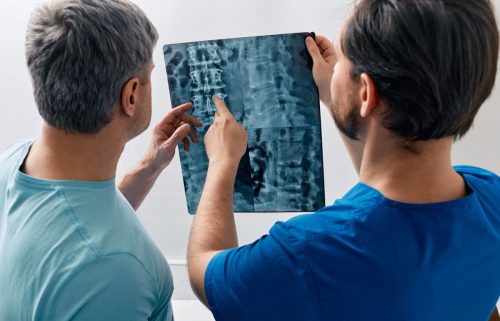
On Nov. 8, 1895, physicist Wilhelm Conrad Rontgen was in his laboratory in Wurzburg, Germany, experimenting on a vacuum tube covered in cardboard when he noticed a mysterious glow emanating from a chemically coated screen nearby. Confused and intrigued, he named the new rays causing this glow X-rays due to their unknown origin—and after playing around some more with the new rays, he discovered that putting his hand in front of the glow allowed him to see past his skin to his bones, thus leading to the world’s first X-ray.
7. Super Glue
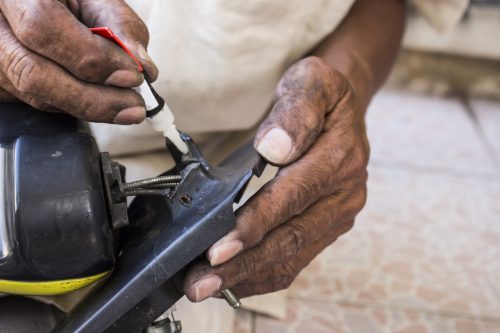
Back in 1942, Harry Coover was looking for materials he could use to build clear plastic gun sights for the war, but what he discovered instead was a chemical formulation that stuck to everything it touched. However, his discovery was rejected because researchers didn’t see a need for such a sticky formula, and it wasn’t until 1951 that the same formula was embraced and repurposed by Coover and fellow Eastman Kodak researcher Fred Joyner as “Alcohol-Catalyzed Cyanoacrylate Adhesive Compositions/Superglue,” as the patent reads.
8. The Implantable Pacemaker
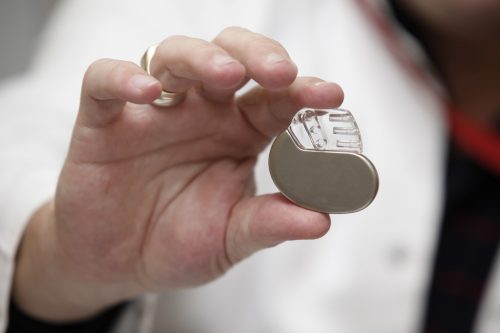
An adjunct professor of engineering at the University of Buffalo, Wilson Greatbatch accidentally invented the pacemaker in 1956. When working on building equipment intended to record heart sounds, the scientist used the wrong transistor and discovered that instead of recording sounds, his device gave off an electrical pulse, mimicking that of the heart. Greatbatch presented his invention to William Chardack, a surgeon at Buffalo’s Veterans Administration Hospital, in 1958, and together the two were able to successfully control a dog’s heartbeat and, in 1960, a human’s.
9. Potato Chips

One of America’s most popular snack foods, the potato chip was invented in 1853 by George Crum, a chef at the Moon Lake Lodge Resort in Saratoga Lake, New York, when one of his customers complained that their French-fried potatoes were too thick and mushy. As legend has it, Speck’s solution was to thinly slice and fry some potatoes until brown, and the patrons loved what was to become the first-ever batch of chips.
10. Teflon
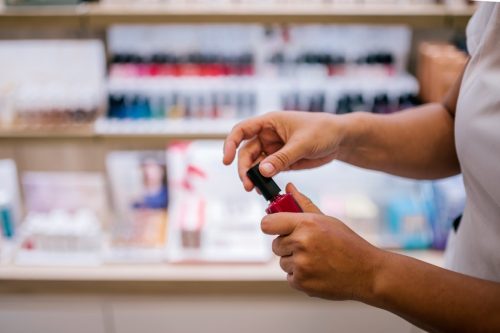
You might not recognize it by name, but Teflon is a synthetic polymer used to make everything from non-stick cooking pans to nail polish. And though it’s a genius invention that changed the way we cook, clean, and groom ourselves, the man who discovered the product—Roy J. Plunkett—did so completely by accident.
The scientist was working at the DuPont Company’s Jackson Laboratory in 1938 researching refrigerants (which help to supply air conditioning and refrigeration) when he noticed that some of his gas had turned into a white power. After some testing, Plunkett concluded that the substance was heat-resistant with low surface friction, giving it the perfect properties for the many uses we see today.
RELATED: 22 Secrets of the One-Dollar Bill.
11. Champagne

Because they lived in such high altitudes, the monks of Champagne had plentiful access to all the best grapes. The problem? When the temperatures plummeted in the colder months, the fermentation process on the wine would stop temporarily—and when it began again in the spring, there would be an excess of carbon dioxide inside the wine bottles, which would give the wine unwanted carbonation.
In 1668, the Catholic Church decided that it was time to handle the situation, and so they brought a French monk named Dom Pierre Perignon over to Champagne to fix the fermentation problem. However, by the end of the 17th century, people had decided that they actually enjoyed this drink, and Perignon’s task thusly changed into making the wine even fizzier. Eventually, Perignon developed the official process for making champagne known as the French Method, crowning him the inventor of the celebratory sip.
12. Chewing Gum

Though variations of chewing gum have been around since ancient Greece, the gum that we know today wasn’t invented until the late 1800s. It was then that an American inventor named Thomas Adams, Sr. stumbled upon the chewy treat—but only after first trying and failing to turn chicle (the substance that gum is made out of) into rubber.
13. Popsicles

Believe it or not, the popsicle’s creator was none other than an 11-year-old boy named Frank Epperson, who simply mixed some soda powder with water and left it out overnight with the stirrer still in entirely by accident. When he woke up in the morning, Epperson decided to lick his frozen soda blend, and he found that it actually tasted, well, pretty delicious. Originally, the young entrepreneur declared his concoction the Epsicle (combining the word icicle with his name), but he later amended the name to popsicle, as children would refer to the ice pops as “Pop’s ‘Sicle” anyway.
14. Coca-Cola
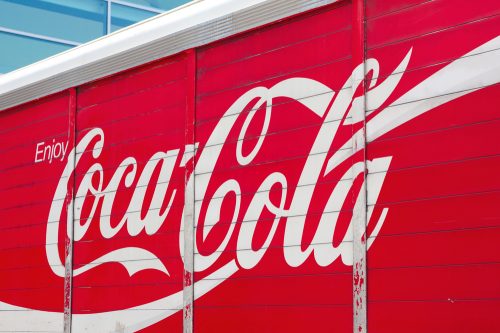
The man who created the syrup for Coca-Cola was not a chef—or even in the food industry. Rather, the soda’s inventor was a pharmacist by the name of Dr. John Stith Pemberton, who was seeking to create a cocaine-and caffeine-filled alcoholic drink that people with chemical addictions to drugs (including himself) could use to wean off of morphine and other drugs. However, when Prohibition hit, Pemberton was forced to take the alcohol out of his formula (though the cocaine remained for decades), and thus the first bottle of Coca-Cola was made in 1886.
15. Dynamite

Though the explosive substance nitroglycerin was invented by Ascanio Sobrero, it was Alfred Nobel who used it to make dynamites. While in Paris, Nobel began to experiment with nitroglycerin, and eventually, he accidentally found a way to tame the substance by mixing it with kieselguhr—though in the process, many people lost their lives, including Nobel’s brother Emil.
RELATED: 54 Hilarious and Random Facts You’ll Want to Tell Your Friends.
16. Matches
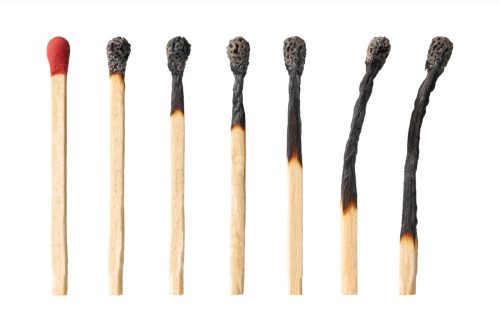
In 1826, chemist John Walker discovered what are now matchsticks when he accidentally scraped a stick coated in chemicals across his hearth and found that it caught fire. Walker’s “Friction Lights,” as he called them, were originally made out of cardboard, but eventually, he switched over to using wooden splints and sandpaper.
17. Viagra

Though Viagra is one of the fastest-selling drugs of all time, its current use is a far cry from what it was originally made for. Evidently, when Viagra was in its trial phase, it was actually marketed as a treatment for angina, a heart condition that causes pressure in the chest. And though the drug proved to be ineffective at helping angina patients, study participants did find that the little blue pill was able to increase the frequency and potency of erections.
18. Safety Glass
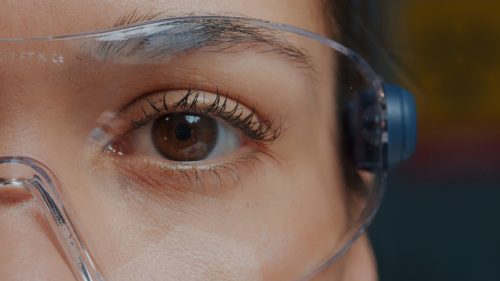
One fateful day in 1903, scientist Edward Benedictus was working in his lab when he accidentally knocked over a flask. However, when Benedictus looked down, he noticed that rather than breaking into a million little pieces, the glassware had actually just cracked slightly while maintaining its shape. After looking into it a bit further, the scientist learned that what had kept the glass together was cellulose nitrate coating the inside of the glass—and thus, safety glass was created.
19. Brandy
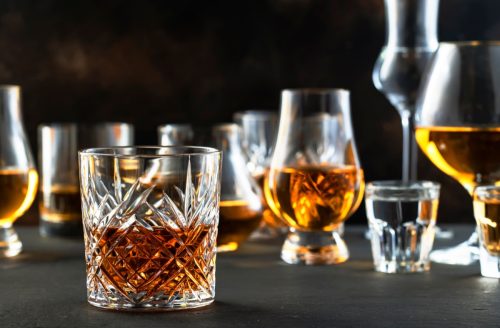
In the 16th century, a Dutch shipmaster was trying to make wine easier to transport, and so he decided to use heat to concentrate the alcohol, with a plan to add water to it once he arrived at his destination. However, what he discovered was that the taste of concentrated wine is much better than that of watered-down wine, so he forewent the water part of his plan and called his new alcohol brandewijn, meaning “burnt wine” in Dutch.
20. Quinine
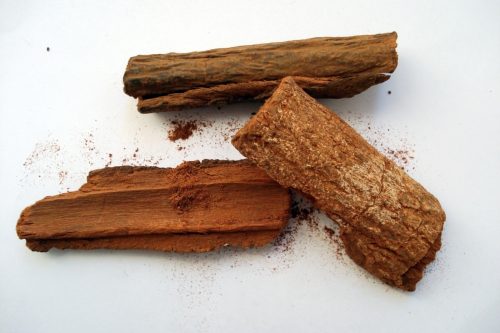
Quinine, the anti-malarial drug composed primarily of cinchona tree bark, was allegedly discovered by an Indigenous South American. While suffering from malaria, the man accidentally consumed some cinchona bark—thought to be poisonous—via a pool of water, and miraculously he started to feel better almost immediately.
RELATED: 37 Weird Facts About the Human Body That Will Blow Your Mind.
21. The Pap Smear

While observing a slide of cells taken from a woman’s uterus, Dr. George Nicholas Papanicolaou came up with the idea for the Pap smear to test for cancer. Originally Papaniculaou’s intention was simply to observe cellular changes during a woman’s menstrual cycle, but during his study, he discovered that one of his patients had uterine cancer—and that her cancer cells could easily be viewed under a microscope.
22. Dry Cleaning
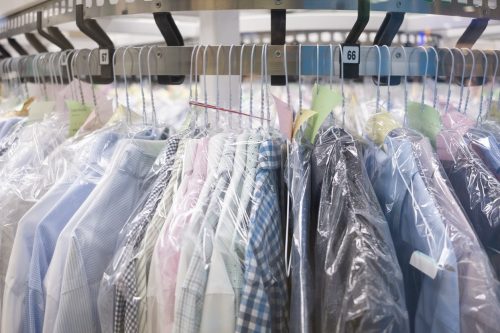
Though the inventor of dry cleaning, Jean Baptiste Jolly, did work in the clothing industry as a textile maker, his discovery of a revolutionary new cleaning method was completely by accident. It was only when his maid accidentally knocked a kerosene lamp over onto a tablecloth that Jolly observed that the kerosene actually made the cloth cleaner, thus spawning the idea for the very first dry cleaner.
23. Vulcanized Rubber

Vulcanized rubber, used to make durable things like car tires, was accidentally invented in 1839 by Charles Goodyear. Though he had been trying to create a weatherproof rubber for years, he was only successful in doing so when he accidentally dropped some regular rubber mixed with sulfur onto a hot stove and found that it still maintained its structure.
24. Vaseline
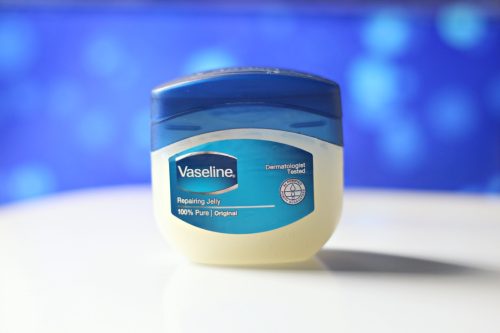
Excited about the possibilities of what could be made with petroleum, 22-year-old chemist Robert Augustus Chesebrough decided to head to the town where the product had been discovered to play around with it a bit. While there, Chesebrough observed that the men drilling the petroleum would use a byproduct of the process on their skin to soothe and heal cuts and burns, and he turned this observation into the product known today as Vaseline.
25. The Ice Cream Cone

Today, ice cream fanatics have a choice between enjoying their treat in a cup or a cone, but that wasn’t always the case. According to the stories, it wasn’t until the 1904 St. Louis World’s Fair that someone came up with the idea to spin a wafer-like waffle into the shape of a cone, and this idea was birthed simply out of necessity. When an ice cream vendor at the fair ran out of dishes to serve his ice cream in, the vendor next to him—named Ernest A. Hamwi—came up with the idea to shape his waffles into cones as vessels for the frozen treat.
RELATED: 35 Disney Facts That Will Bring Out Your Inner Kid.
26. Botox Treatment
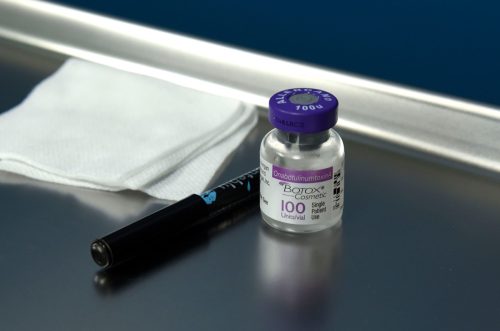
In the ’80s, a San Francisco ophthalmologist was testing out new treatments for crossed eyes—and though he found it, what he also discovered was that his treatment had miraculous face-lifting side effects, leading to the creation of Botox.
27. Tea Bags

Though two women first filed a patent in 1901 for a “Tea-Leaf Holder” made out of mesh, the invention of the modern tea bag is credited to tea merchant Thomas Sullivan. In 1908, Sullivan began shipping samples of his tea out in small silk pouches—and though his intention wasn’t for people to use these as tea bags, customers did so anyway, and they loved the convenience of it.
28. The Safety Pin
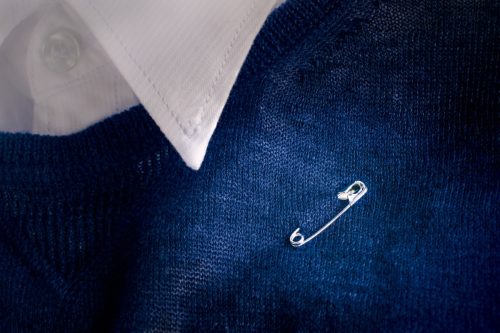
Supposedly, inventor Walter Hunt was sitting at his desk trying to figure out a way to pay off some debts when he started to futz around with some wire. As he played around with the scrap of metal, he discovered that when coiled, it could clasp to itself and unclasp again— and on April 10, 1849, Hunt patented his idea for the safety pin.
29. Silly Putty
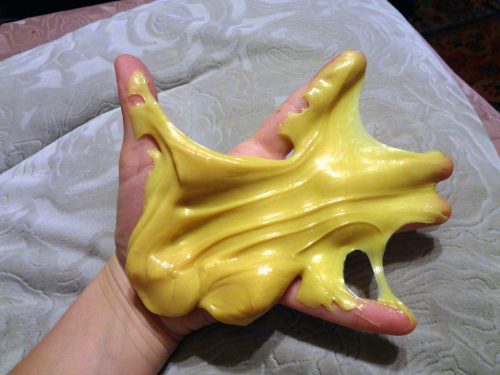
During World War II, engineer James Wright was tasked with inventing a cheap alternative to synthetic rubber. While working on finding a substitute, Wright dropped boric acid into silicone oil and discovered that the resulting product was stretchy and bouncy, with the added bonus of being able to copy words from newspaper clippings and comic strips. However, Wright’s employers weren’t impressed by his “nutty putty,” and it wasn’t until a few years later that businessman Peter Hodgson saw the potential in it.
30. Bubble Wrap
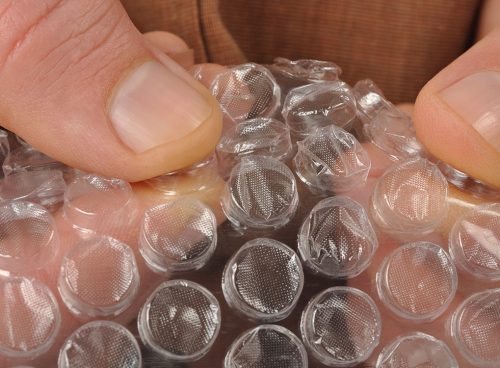
Engineers Alfred Fielding and Marc Chavannes did invent bubble wrap on purpose—but when they made it, the intended use for the product was all wallpaper, not as packing material. However, when their bubbly wallpaper proved to be unsuccessful, the two entrepreneurs decided to pivot and market their product instead as greenhouse insulation and later, in 1960, as protective packaging.
RELATED: 75 Weird Animal Facts Everyone Should Know.
31. French Fries
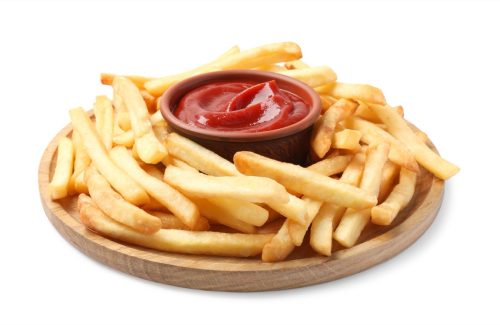
The name may suggest otherwise, but it’s actually the Belgians who claim to have invented this classic potato dish. According to local lore, the whole thing kicked off back in the winter of 1680 when rivers froze, leaving the fried-fish-eating population without anything to eat. To help keep everyone fed, they decided to use potatoes instead, making sure to cut them into long segments before throwing them in the fryer.
32. Velcro
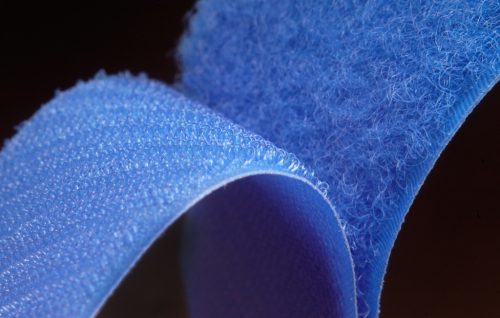
Have you ever gone for a walk in the woods and come back with something stuck to your pants? Well, the same thing happened to a Swiss engineer named George de Mestral when hiking the Jura Mountains back in the ’40s. He later placed the debris under a microscope to better understand how the hooks engaged the loops in the fabric of his pants. After consulting a few friends, he was able to recreate the process using velvet and crochet, or what we now know as “Velcro.”
33. The Slinky
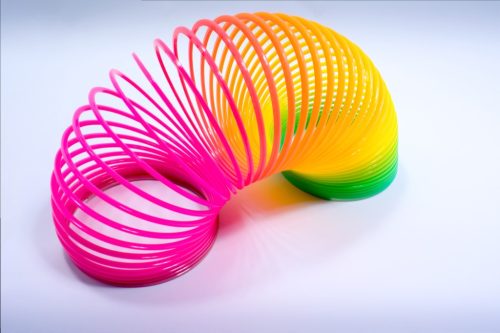
Richard James was an engineer back in the ’40s, though his most notable discovery came about entirely by accident. At the time, he was trying to create a system of springs that would keep sensitive ship equipment steady at sea. He knocked some of the materials off of a shelf by accident and was amazed by the way they “walked” down instead of falling. He consulted his wife and the two of them worked to turn this accidental invention into the world’s next hit novelty toy.
34. PLAY-DOH

Kutal Products was once one of the world’s largest manufacturers of wallpaper cleaner, but profits started to slip once heating homes with coal began to fall out of favor. Then, one of the heads of the company received a call from his sister-in-law about how the putty they used could be used for molding projects instead. At the time, she was a nursery school teacher and was able to test out the nontoxic material with her students, who loved playing with the product. Fast forward to today, and “Play-Doh” has become one of the most popular toys of the 20th century.
35. Smoke Detectors

Swiss physicist Walter Jaeger accidentally invented the smoke detector in the late ’30s. At the time, he was working on a sensor that could identify poison gas. It wasn’t until he lit a cigarette that he realized the invention was better at picking up smoke particles instead. Unfortunately, it proved too expensive to be mass-produced and sold commercially at the time. It would take about another 40 years for smoke detectors to be made cheaply enough to be regularly installed in homes.
Wrapping Up
That’s it for our list of accidental inventions, but be sure to check back in with us soon for more amazing trivia. You can also sign up for our newsletter to enjoy similar content, as well as the latest in wellness, entertainment, and travel.